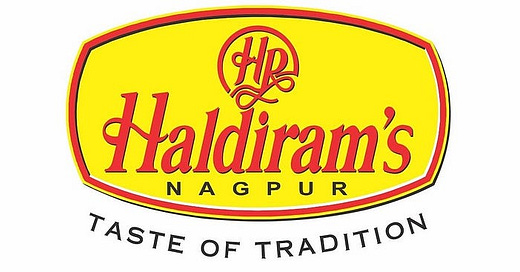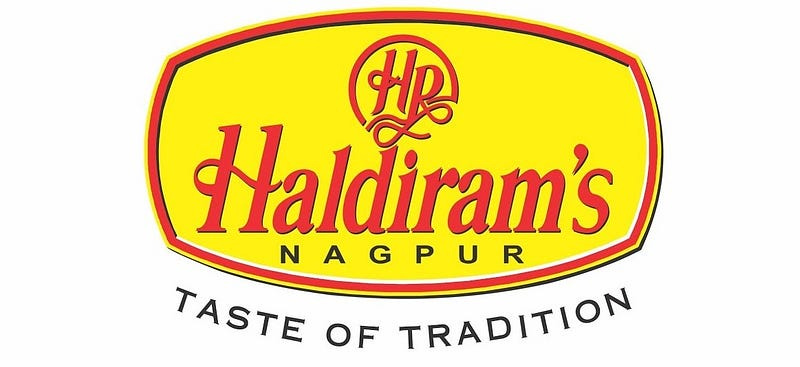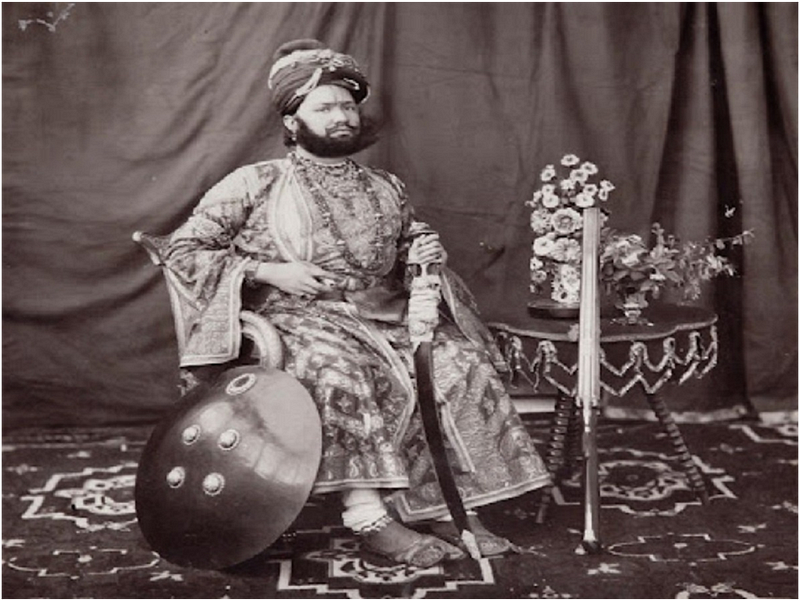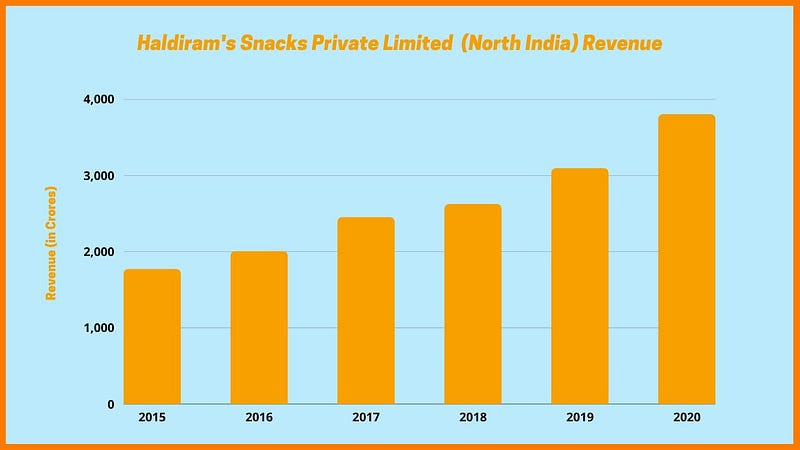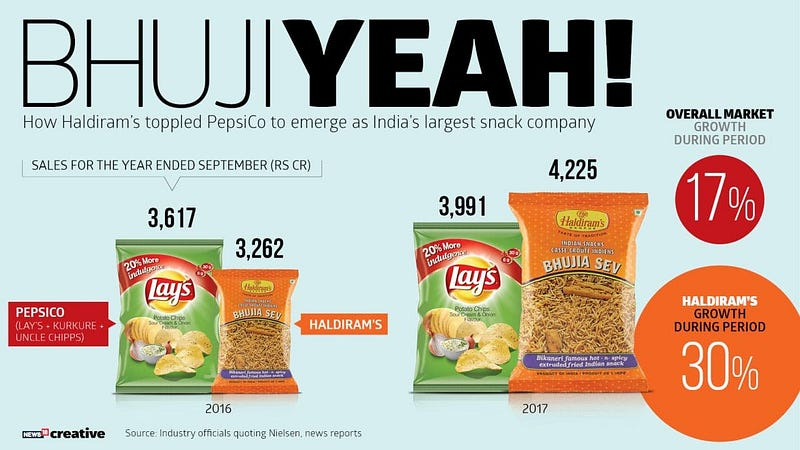Haldirams — A Case Study on India’s household brand and legacy
A Case Study on how Haldirams went from 0 to 20,000 Crores
A Case Study on how Haldirams went from 0 to 20,000 Crores
Last year, a sweet shop with humble beginnings from Bikaner reached a 20,000 crore valuation. The story begins at a time where young Sri Ganga Bishan Agarwal fondly known as Haldiram by his mother, joined his father in helping him make and sell Bhujia.
As a young boy, he had observed his aunt’s Bhujia recipe where she would use matki dal instead of basin. Haldiram adopted the same recipe and focused on making Bhujia finer and crisper. He went on to start a small shop in Bikaner in 1937.
He also added his own twist by adding a particular type of lentil known as ‘Matki’ as his shop and Bhujia became popular, he started selling it at a price of 5 paisa per kg as opposed to his father who sold it at the price of 2 paisa per kg.
He parted ways with his father and grandfather’s business eventually and gave a brand to his bhujia by calling it ‘Dungar Sev’ named after a ruler of Bikaner, Maharaja Dungar Singh. Now Dungar Singh was not only a ruler he was also one of the most famous and influential people that Bikaner.
By naming it ‘Dungar Sev’ he borrowed some of that trust and some of that influence that that name commanded a smart marketing move by a person who would build one of the largest brands in the country.
About a decade later, Bujiya or Dungar sev was so popular that his shop would sell 200 kgs of it every single week. The price had also gone up from the original two paisa per kg to 25 paisa per kg.
Now, in the 1950s, Haldiram and his wife were once visiting Kolkata for a wedding when he got the idea of starting a shop there.
While most people go to a wedding to enjoy, entrepreneurs go there for expansion.
In 1957, Haldiram, along with his two sons, Moolchand and Rameshwar Lal, set up a shop called Haldiram Bhujiawala in Kolkata.
The shop became a success in a few years. Now, over the next three decades, the grandsons of Haldiram expanded their business.
Shiv Kishan Agarwal took the business to Nagpur. Manohar lal and Madhusudhan Agarwal took the business to Delhi.
Now, one thing about Delhi was that Delhi was a fierce competitive playing ground.
Gujiya was not a unique product there and they had to focus on innovating the product and the flavors to keep up with the competition. However, by 1983, Shiv Kishan had also expanded his business to Delhi.
With the help of his brothers, they set up a house and a factory. A few stories about a sikh baker’s shop in Chandani Chowk.
During the 1984 riots, the baker’s shop and the house and factory of the Agarwal brothers were burnt down and destroyed.
The brother decided to build the business from the ground up and give it a brand new start. Very soon, the business picked up and they turned their apartment into a factory, trying to keep up with the demand.
Now, the Single location was not enough, and they set up their first factory in the late 80s. One issue that has been plaguing the Haldiram’s brand for a very long time was family disputes. Haldiram had put territorial division.
The northern part was served by Haldiram snacks and ethnic foods.
Haldirams. Haliram’s Foods International served the western and southern part of the country, and the Kolkata based Haldiram Bhujiyawala served the eastern part.
When the Kolkata based business and family tried to enter the Delhi region, they refused to alter their brand name. As result, the grandsons of Haldiram got involved in a dispute over trademarks and brand ownership.
By the 90s, they had started exporting their products to different countries. Despite the fighting, however, the brand continued to grow. Imagine this for the customer, right? It would be so confusing to see two companies with the exact same names. Who do you buy from? Who do you have allegiance to? Are they the same company? Now, to avoid all of that, the case went to court, and it went on for 15 years.
Finally, in 2013, the court made Delhi based Haldiram the sole owner of Haldiram Bhujiawala. Now, over the years, the grandsons of Haldiram expanded the business to multiple parts of India and eventually took it abroad and started stocking up in different parts of the world.
In the financial year 2013 to 2014, haldiran’s revenues crossed 3500 crores, more than the combined revenue of Domino’s and McDonald’s in India in the same financial year.
In 2017, Haldirams became India’s largest snack company, surpassing PepsiCo in sales. Haldiram brought in more than a billion dollars in revenue.
So what is their secret sauce? Why did they win? The first thing is that they nearly focused on shelf life. Today, they use nitrogen filled pouches for up to six months of shelf life and even use the tagline six months on the shelf and 6 seconds in your mouth.
Second thing is that they realize that Namkeen is an impulse buy for people. If you want to package namkeen well, then you need to do so with very colorful packaging to attract that impulse buy. And this brings me to my next point, which is that Haldiram’s brand stood not just for trust, but also for celebration.
Whenever somebody is in a celebratory mood, they tend to end up spending more money. And this is something that the alcohol brands have realized for a very long time. But Halirams took a very different approach to the same thing.
They had deep offline distribution networks, they had relationships with distributors, they had relationships even with individual stores in the beginning. These relationships, while it can’t be quantified as a large number, was very easy for them to put their product into the hands of the people.
Finally, and this is an approach that Hadirams took, that is the complete opposite of Red Bull, was that they had full control of manufacturing and the ability to cost control. Whenever hadi Rams felt that there was something that was too expensive, they would bring down the cost themselves because they had full control of the process.
Today Haldiram’s is a 20,000 Crore empire, and the rest is history.

